
Key considerations
- Available for £27,500
- 2.4-litre flat-four, rear-wheel drive
- Bigger engine largely plugged the GT86’s torque hole
- Revamped chassis still great, though steering maybe wasn’t quite as good
- One spec fitted all and there was no room in the back
- Prices finally starting to come down a bit but still high
Guess when the original Toyota GT86/Subaru BRZ went on sale? The answer might surprise you. 2012. That’s right, 13 years ago. As they say, time flies when you’re having fun, and that’s certainly what most GT86/BRZ owners would tell you if you asked them how they’d been enjoying life in their ‘designed for fun’ two-door lightweight coupés inspired by the AE86 Corolla of the 1980s.
The GT86 wasn’t big, fast, or even particularly clever, but the lightweight simplicity of its classic front-engined, rear-drive platform was exactly what made it so great. Depending on spec it weighed between 1,200 and 1,300kg, the flat-four ‘boxer’ design of the naturally aspirated, direct injection 200hp 2.0 litre 4U-GSE (Subaru code FA20) engine helping the car’s cause by keeping a greater percentage of the drivetrain weight lower in the car than would have been the case if they’d used a more top-heavy conventional inline four.
An absolute raft of imaginatively named and specced editions broadened the 86’s global sales proposition, but despite its warm reception by the press with many ‘best driver’s car’ awards given to it, the GT86 didn’t sell in big numbers in the UK. Potential buyers who fully appreciated the car’s lightweight handling dynamics were uneasy about its peakiness and perceived lack of performance, citing its high-7s 0-62mph time as incompatible with the concept of a truly sporty drive. On top of that, it wasn’t seen as practical enough to be a one-car solution, the rear seats being only suitable for cargo rather than humans.

For manual GT86s (there was also a torque converter auto whose software was supposed to mimic the action of a twin-clutch transmission), a 2017 facelift brought a small power increase from 200hp to 205hp and a small torque boost, but it was the 2021-on ZN8 gen-two GR (Gazoo Racing) version that we’re looking at here that really rekindled interest in the GT86. Although the engine was essentially the same boxer unit as the GT’s, the 86mm bore and stroke dimensions that had given rise to the car’s name were different, the bore being increased to 94mm to lift the D-4S’s displacement to 2.4 litres and the power to 231hp. The combination of that with 33lb ft more torque at much lower rpm (3,700rpm compared to 6,400rpm in the GT86) gave the GR a 0-62mph time in the low sixes and added a lot more driveability.
The GR’s heavily reshaped body was all new. It featured an integrated boot spoiler, a Supra-esque front end and prominent side skirts with functional vents behind the front wheelarches and ahead of the rears. There were chassis improvements, too, courtesy of extra body bonding. This reputedly boosted torsional rigidity by 50 per cent. The GR was 50kg heavier than the GT86, but thanks to the use of aluminium for the bonnet, roof and front wings the overall weight remained low at under 1,350kg.
Those lukewarm GT86 sales may have impacted on the number of GRs allocated to the British market, but you might be of the opinion that the plan was always to throttle the supply to hike up the hype. Would-be buyers in the US had similar difficulties in securing cars. It’s thought that fewer than 8,000 GRs were built. 4,500 of those came to Europe. Apart from a few extra cars announced in the early Winter of 2023 the total of GRs set aside for the UK was somewhere between 400 and 430 cars, a small enough number to ensure that the full two-year UK allocation was sold out in 90 minutes.
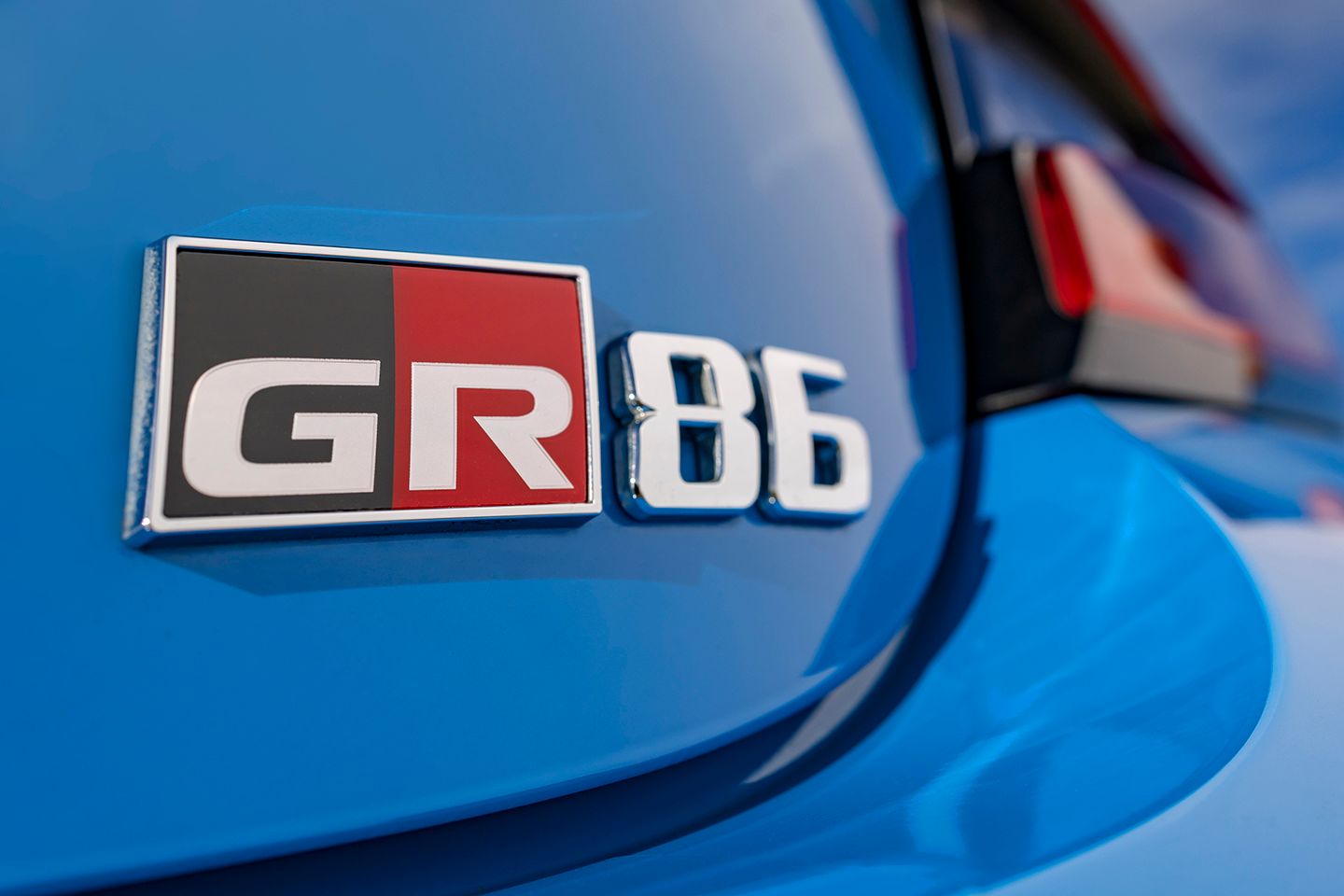
In 2023 Toyota UK was telling customers that the GR86 was being discontinued ‘after 2024’, not for emissions reasons – the flat four’s less than stellar performance in that aspect being easily absorbed by Toyota’s huge range – but because it would be too expensive to re-engineer the car for European safety regs that mandated a crash structure revamp and the fitment of a battery of cameras and sensors.
The GR remains on sale in the US and Japan. Just as we were going to press with this guide Toyota unveiled some 2026 cars which included a new Supra, GR Corolla and a newly bodykitted, quad-exhausted, Sachs-dampered Yuzu Edition GR86. Japanese car websites have also been talking about an all-new GR86 for the 2027MY. Industry observers have touted a variety of possible engines for this including a 1.6 3-cylinder turbo or some form of hybrid. The most credible rumour however is that it will have a naturally aspirated 2.0 inline four, presumably because that will open it up to easier turbocharging for GRMN performance models. Whatever the long-term fate for the GR86 might be, the flat fours have certainly finished in the UK.
As we went to press in the Spring of 2025 there were just under thirty GR86s for sale on the big sites. Damaged/repaired cars could be picked up for £24k, but the realistic starting price for uncrashed UK examples was £27,500, with dealers charging up to £32k (or sometimes more, see the verdict at the end) for lightly used late-model GRs. That represents a drop from a year ago (Spring 2024) when used prices were higher than the new RRPs at up to £35k. Pretty much the only choice buyers of new GR86s needed to make was between the 6-speed manual or the 6-speed auto. All bar one of the used GRs we found for sale were manuals.
SPECIFICATION | TOYOTA GR86 (2021-)
Engine: 2,387cc flat four
Transmission: 6-speed manual, rear-wheel drive
Power (hp): 231@7,000rpm
Torque (lb ft): 184@3,700rpm
0-62mph (secs): 6.3
Top speed (mph): 140
Weight (kg): 1,346
MPG (official combined): 32.1
CO2 (g/km): 198
Wheels (in): 7.5 x 17
Tyres: 215/45
On sale: 2021-2023 (UK)
Price new: £30,930
Price now: from £27,500
Note for reference: car weight and power data are hard to pin down with absolute certainty. For consistency, we use the same source for all our guides. We hope the data we use is right more often than it’s wrong. Our advice is to treat it as relative rather than definitive.

ENGINE & GEARBOX
The boring-out of the engine to 2.4 litres and the lowering of the rpm at which peak torque was delivered made the GR an altogether different proposition to the GT86 in terms of everyday driving. It didn’t have the shove of a turbo at low or medium revs in a higher gear but it was a lot less gutless than the GT86. It was friendly power too, working brilliantly with the standard limited slip diff to largely negate the absence of embarrassment-saving all-wheel drive. The red line was at around 7,500rpm, but you could row along at a very brisk pace without going anywhere near that.
The manual GR86 had no auto-blip function on downshifts, which was surprising as the manual GR Yaris did have that facility. By way of compensation the shift action was fantastic and reason enough on its own to shun the automatic option.
There was a small number of GR engine failures on cars that spent a lot of time on tracks featuring long right-hand bends, where the design of the sump and oil pickup could cause oil starvation. Fitting an external accumulator or baffling the sump were the most common solutions. Larger capacity sumps have since been developed by the aftermarket. For those doing a fair amount of hard driving on normal roads a slight oil overfill would be enough to preserve the engine’s integrity. It was always a good idea to keep any 86’s oil fresh, the right spec, and not too hot as thinned-out or overheated lube on hard-used cars could lead to spun bearings. On pre-GR facelift GT86s fingers were being pointed at excessive use of RTV (room temperature vulcanising) silicone rubber sealant that was causing oil flow blockage on some cars, but as far as we know that didn’t knock on to GRs.
In the UK at least, the GR only had a three-year warranty instead of Toyota’s normal five-year one, but the company said they would add an extra year to the warranty if you had seven years’ worth of servicing at a Toyota dealer. In Spring 2025 a three-year plan from Toyota cost from just over £42 a month, although when you dug into the details of it on their UK website that seemed to be for the GT86 and GR Supra, with no apparent price for the GR86. There was a separate one for the GR Yaris at just under £50 a month. For that sort of money you got three scheduled services, one MOT test, a 6-month safety check and three years’ roadside assistance. Independents will charge around £375 for an A service and £545 for a B.
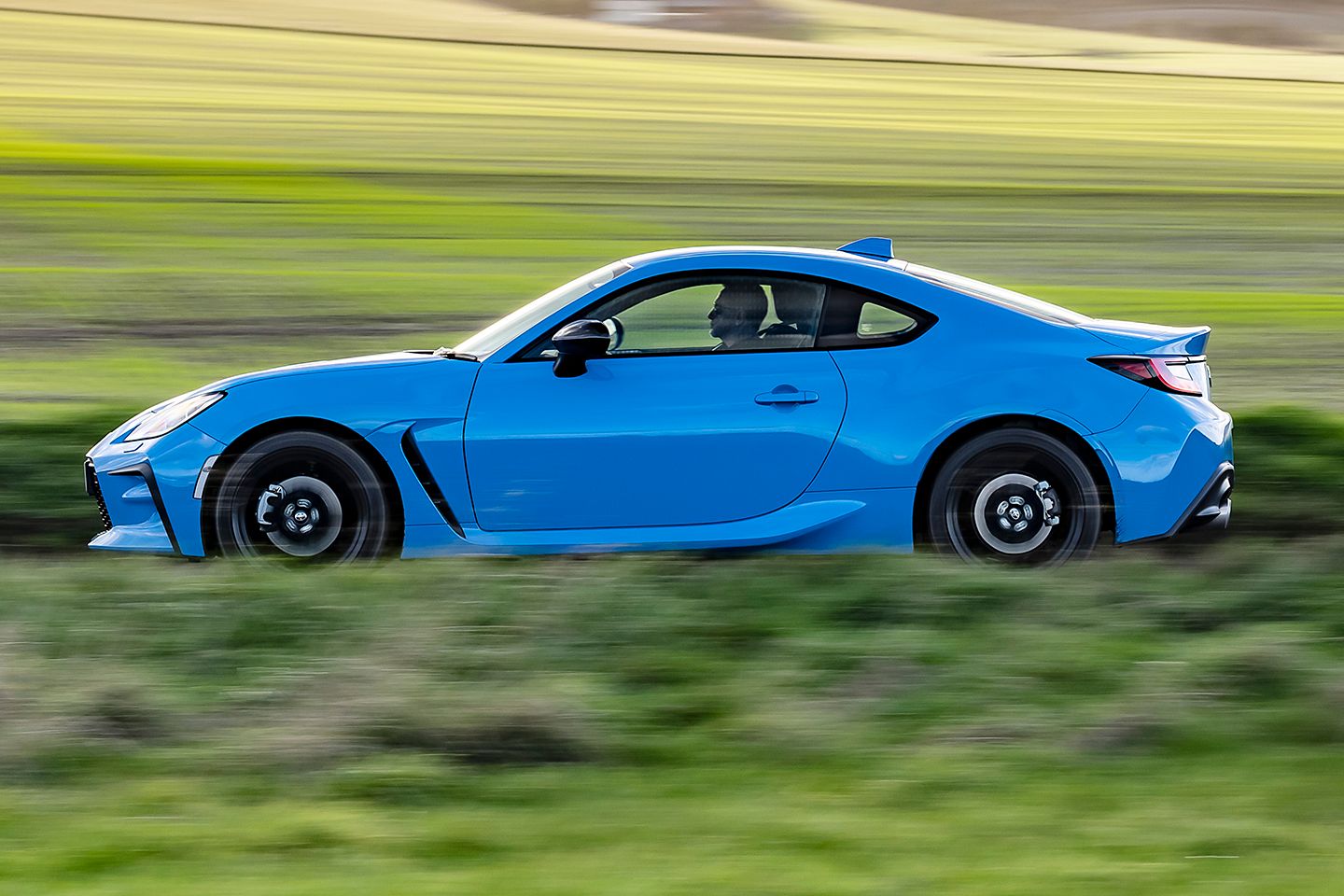
CHASSIS
The GT86’s suspension was uprated for the GR. It was still passive but there were new dampers and springs and revised mountings for the anti-roll bars. The ride was on the firm side but not uncomfortably so. Although some owners of GT86s thought the GR’s steering wasn’t quite as good as the old car’s it was still brilliant, and with the car being rear-wheel drive the turning circle was usefully small.
Brake power and feel was excellent and as mentioned earlier a limited slip differential was standard. The sum total of it all was a very fair representation of the best old-school driving experiences that older ones among us might remember. Two buttons on the centre console behind the gearstick allowed you to disable the traction control (left) or engage track mode (right). If you pressed and held both buttons at once that would take off all the chassis helpers. On automatic GRs a rocker switch between those two let you choose between Sport or Snow modes.
The ten-spoke wheel design was supposedly inspired by Japanese swords. Tyres were Michelin Pilot Sport 4s, a handy improvement gripwise on the old efficiency-oriented Prius tyres the GT86 had, but also somewhat noisier too.
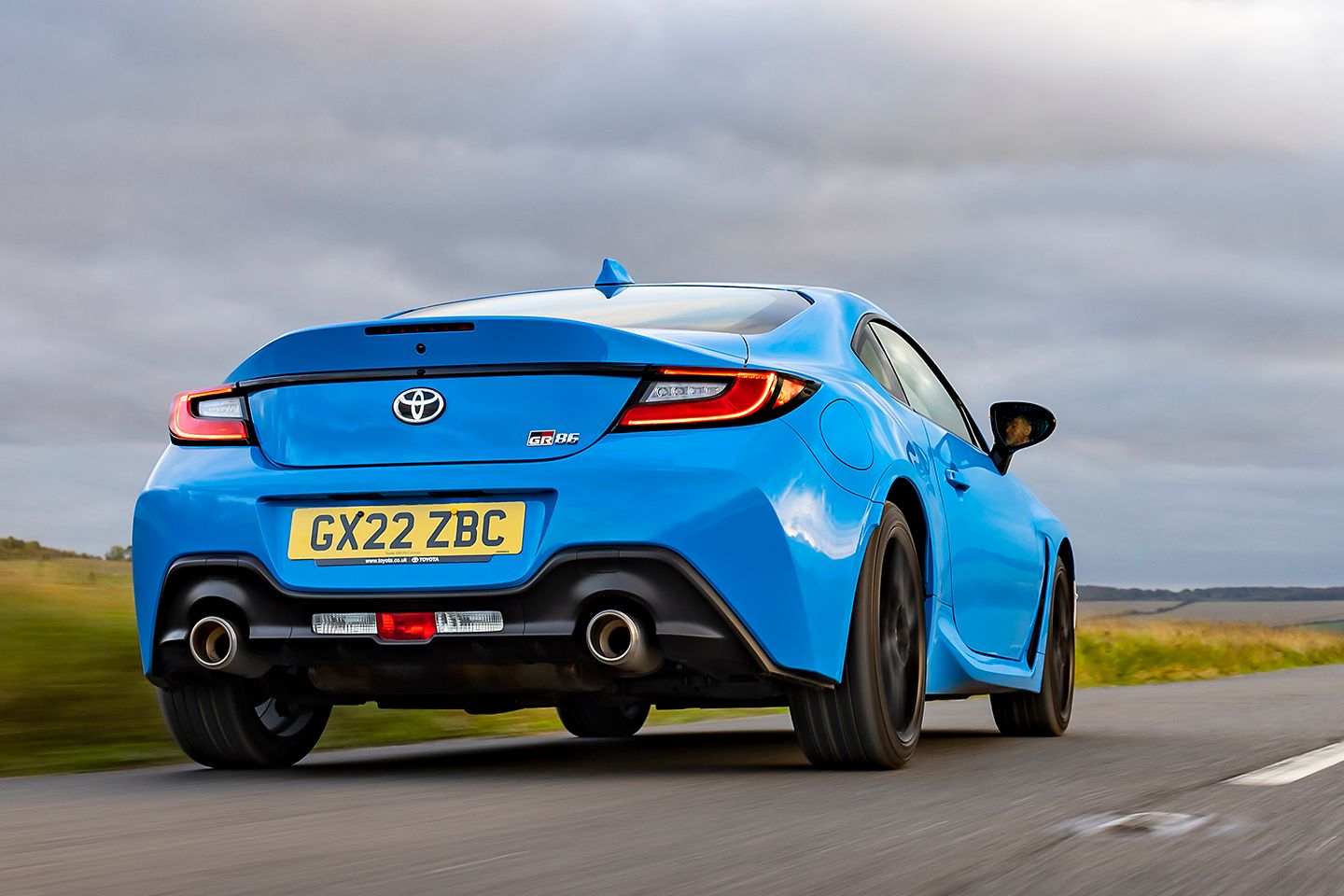
BODYWORK
Silver paint showed off the GR body’s sculptured lines to best advantage. Optional colours like the Hyundai N-ish Neptune Blue cost £965. That was about the only GR86 option box you could tick.
The boot wasn’t big at 226 litres, but you could boost its useability quite a lot by folding the back seats down. We doubt you could get a bike in there though, even with the front wheel removed, but maybe someone reading this has managed it and can tell us we’re wrong.
There was a recall at the end of 2022 to sort out non-activation of the data comms module that enabled emergency calls to be made automatically in severe crashes or via the SOS button in the roof panel. Another recall in August 2023 was for a tail light issue affecting 67 cars but none of them were UK cars.
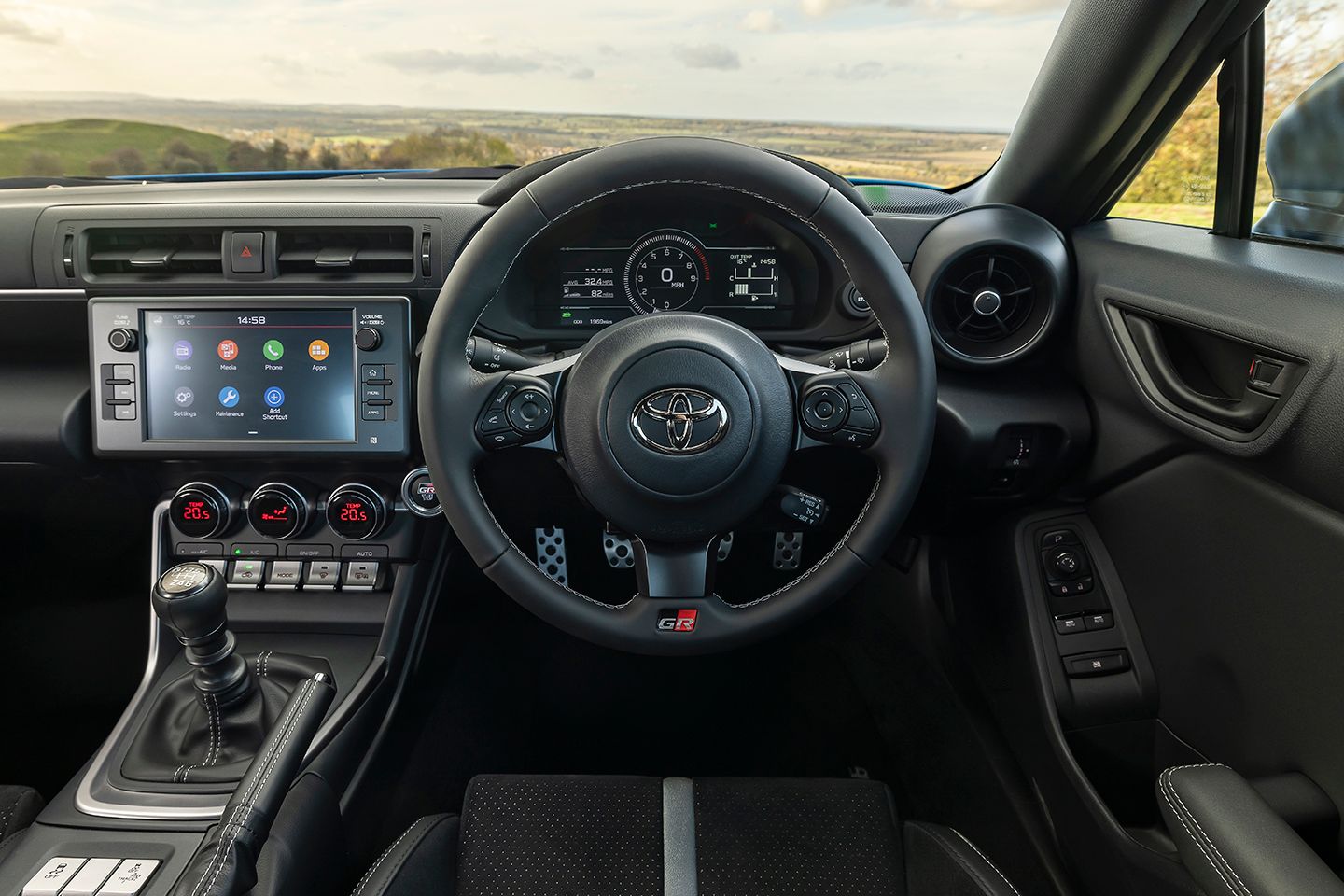
INTERIOR
‘Limo-like’ or ‘premium’ weren’t phrases you would automatically find yourself using to describe the GR. It had too much road noise in the cabin for that, with the occasional rattle on some cars too, usually from the area around the overhead console. Otherwise it fulfilled its brief perfectly. There weren’t many changes to the GT86 design but the GR’s quality seemed better, likely the result of Toyota’s penchant for continuous improvement.
Having said that, the nice Alcantara-like inserts in the grippy seats and on the door card tops were counteracted to some extent by plastics elsewhere that were sometimes harder than the old car’s. Unlike the GT86, all the UK GRs arrived with the same trim level: there were no alternatives. Top-spec GTs that were at least as luxurious as the GR were available, but they were very rare.
The driving position was superb, low and, er, driverish but with excellent visibility out front (unlike the GR Yaris). The dash and general layout was unfussy and pleasingly functional with dial/button controls for the HVAC and a proper manual handbrake, although the ‘bounceback’ indicator stalk was a less pleasant reminder of a daft idea Vauxhall had many years ago. Some thought the rim of the steering wheel (a GT carryover with a GR badge insert) was too skinny. There again some think that the rims of quite a few BMWs are too podgy.
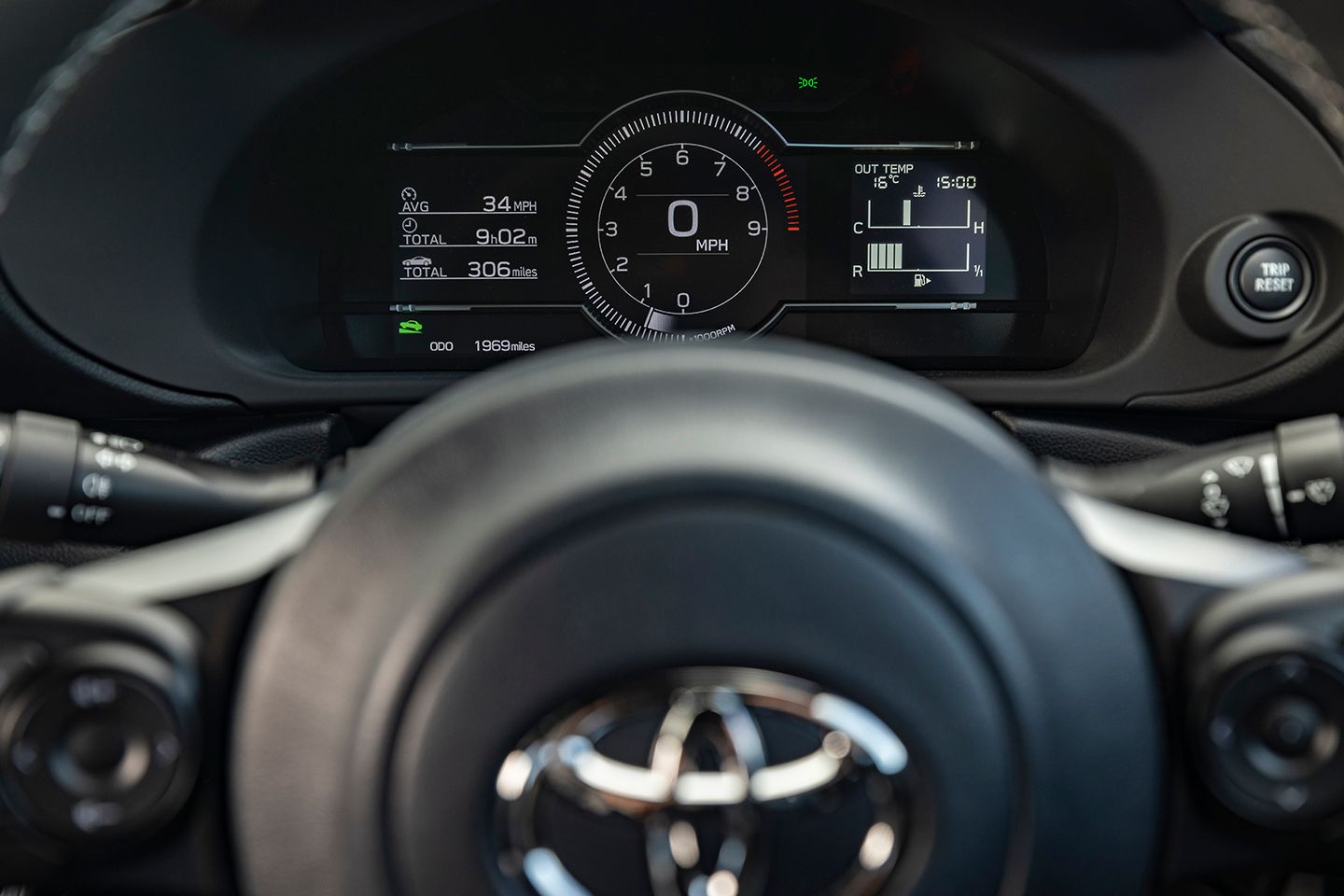
To the left of the central speedo/tacho was a secondary display with not just a lap timer but also a power/torque graph and a G-meter. Switching to track mode changed the main display to a left-to-right sloping tacho readout and reduced the influence of the stability control. Apple CarPlay and Android Auto were part of the infotainment suite. Sat-nav wasn’t, which wasn’t such a hindrance because sunlight coming from the wrong direction could make it tough to see much on the (quite basic) eight-inch screen anyway.
The glovebox was 25 per cent larger than the GT86’s and there was reasonable oddment space elsewhere in the cabin. The button that opened up the central butterfly-wing cubby was too easy to hit with your elbow though and the location of the cup/bottle holder behind that was less than ideal if you had a bottle in there when you were engaging even-numbered gears. Probs best not to have a bottle because then you’d have somewhere to put your phone.
As noted earlier the rear seats were emergency-only tokens but at least there were Isofix fastenings for two child seats. Oddly the auto/adaptive cruise that was available in the manual-transmission GR Yaris was only available in the automatic GR86, not the manual one.
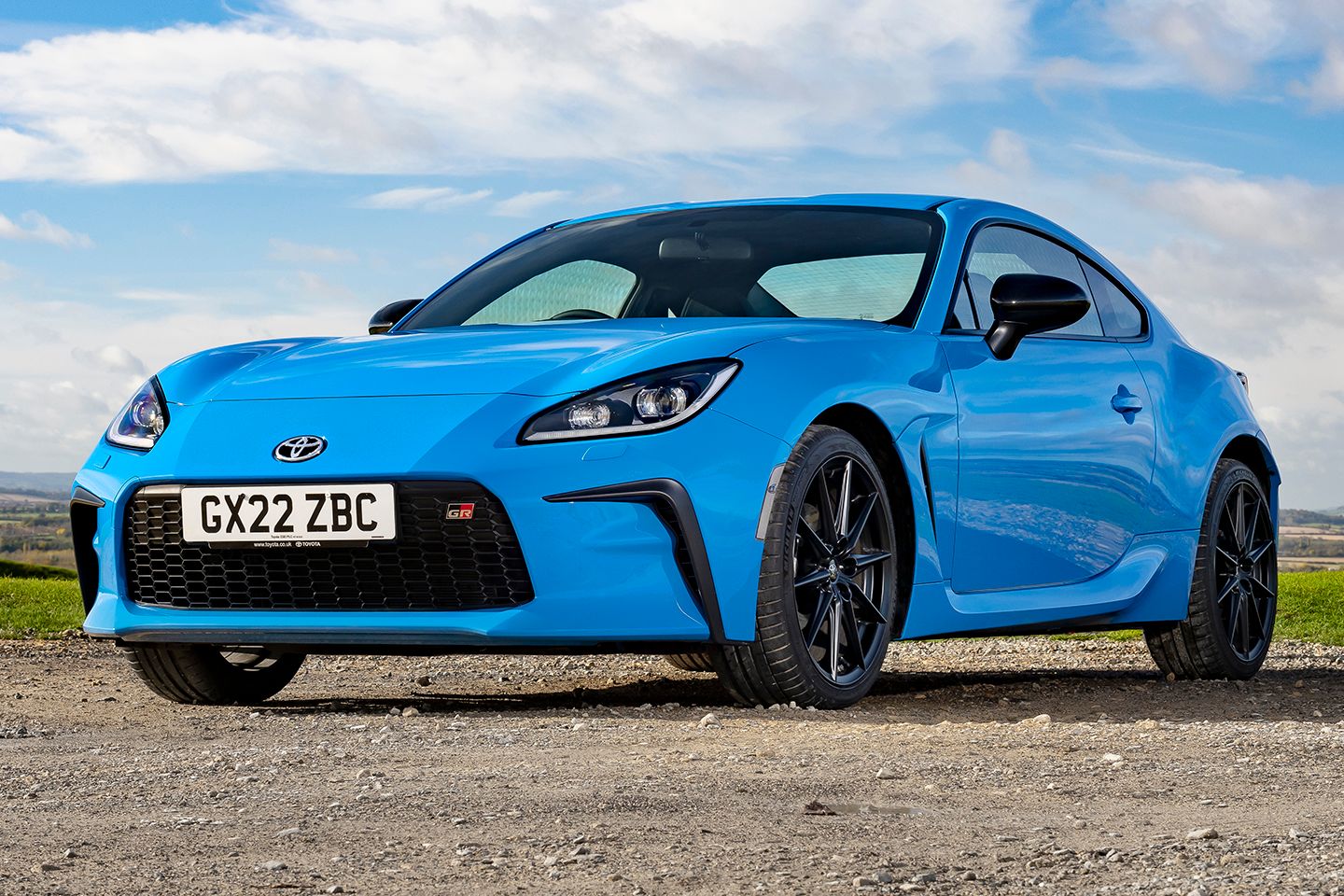
PH VERDICT
Two cars in the 2021 Toyota range felt genuinely special: the GR Yaris, and the GR86. Being realistic, there wouldn’t be much difference between the lap times of a GT86 and a GR86 wearing identical tyres and driven by the same pair of hands. You could probably put that down to the lighter weight and arguably better steering feedback of the GT balancing out the GR’s heavier power.
Something like a BMW 2 Series might be more relaxing than a GR if you’re a motorway pounder, but if you’re the type who doesn’t mind hopping onto A and B roads every now and then – and let’s be honest, the potential of UK motorways to ruin your entire day at a stroke means that’s starting to become a viable alternative – you’ll struggle to find much wrong with the GR. The way it interacts with you is special. The controls are as satisfying as the handling.
That driver appeal, plus its short build span, youth and small number made are conspiring to keep used values unsurprisingly high. The cheapest car we found for sale in the UK was also the leggiest at just under 38,000 miles. That one was up at a dealer’s for £27,450.
Privately owned cars will be cheaper, as demonstrated by this one on PH classifieds, another 2023 car but with just 6,000 miles on the clock for just £1,000 more than that 38k example at £28,850. If you’re looking at putting one down in the way you might a fine wine, this 8-mile (yes, eight) car in Crystal Black could be the answer. It was the most expensive GR on PH in April ’25 at £33,250.











